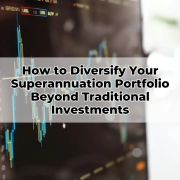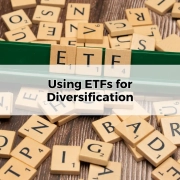Fixed Income ETFs
Table of Contents
ToggleIn today’s unpredictable markets, many Australians are searching for investment options that offer a blend of stability, income, and flexibility. While shares and property often dominate the headlines, one strategy is gaining renewed attention—fixed income exchange-traded funds (ETFs).
At Wealth Factory, we’re seeing more clients explore how fixed income ETFs can fit into their retirement planning, boost passive income, and reduce risk. So, what are fixed income ETFs, and why are they worth a closer look?
What Are Fixed Income ETFs?
A fixed income ETF is an investment fund that trades on the stock exchange and holds a basket of bonds or other income-producing assets like debentures, capital notes, and corporate or government bonds. These ETFs aim to generate regular interest income while offering a defensive cushion for your portfolio.
Unlike individual bonds—which can be hard to buy and sell—ETFs offer daily liquidity, meaning you can enter or exit your investment at any time the stock market is open. They’re also transparent, often listing their holdings daily, so you always know what you own.
Why Investors Are Turning to Fixed Income ETFs
The popularity of fixed income ETFs has grown rapidly in Australia, especially among people approaching retirement or those wanting reliable monthly income. These ETFs offer a range of benefits:
-
Diversification: Spreads your investment across many issuers and sectors, lowering risk
-
Steady Income: Distributes regular interest payments, often monthly
-
Liquidity: Unlike term deposits or individual bonds, ETFs can be traded instantly
-
Transparency: Clear visibility of holdings and performance
-
Low Fees: Typically cheaper than actively managed bond funds
For those used to the rigidity of term deposits, ETFs provide flexibility—plus they don’t come with early withdrawal penalties.
How Do Interest Rates Affect Fixed Income ETFs?
Interest rates play a key role in how fixed income ETFs perform. When interest rates rise, existing bond prices typically fall. But ETFs holding shorter-term bonds or floating rate notes are less sensitive to these changes, making them more attractive during rate hikes.
Additionally, many ETFs actively manage interest rate risk by investing in a mix of bonds with various maturity dates and credit ratings. This reduces the impact of any single economic event and helps preserve your capital while generating income.
Credit Quality Matters
When choosing a fixed income ETF, one crucial factor is the credit quality of the underlying bonds. These ratings—ranging from high-grade (AAA) to high-yield or sub-investment grade—tell you how likely the bond issuer is to repay the debt.
High credit quality ETFs tend to offer lower but more stable returns, while high-yield ETFs can offer better income but with increased risk. It’s all about finding the right balance based on your goals and risk tolerance.
Australian Banks and the Rise of Income ETFs
One example of a fixed income ETF designed for Australian investors is the Global X BANK ETF, which focuses solely on bonds issued by Australian banks. These institutions are known for their strong regulation, high capital buffers, and resilience in economic downturns.
This ETF invests in a mix of senior bonds, subordinated bonds, and hybrid securities—some of which even include franking credits, offering a potential tax benefit. With monthly income distributions, it’s especially popular among retirees and income-focused investors.
ETFs vs Term Deposits: What’s the Difference?
While term deposits remain popular—particularly with SMSFs—they come with limitations. You’re often locked in for a set period, may face break penalties, and won’t benefit from falling interest rates (which can boost bond prices).
In contrast, fixed income ETFs provide daily access, often deliver better yields, and offer the possibility of capital gains in certain interest rate environments. And with auto-reinvestment of bond income and efficient rollovers, they reduce admin and complexity.
Building a Balanced, Defensive Portfolio
No single investment fits every situation. But fixed income ETFs make it easier to construct a well-diversified portfolio that includes growth assets like shares and defensive assets like bonds.
A common rule of thumb is to match your age to your bond allocation—for example, a 60-year-old might aim for 60% in fixed income. Within that, mixing different bond types (e.g. floating rate, hybrid, government, and corporate) can offer protection while capturing attractive yields.
Geographic diversification is also becoming more common. Australian investors can now access international bond markets—like the U.S.—via ETFs, giving them access to different interest rate environments.
Is a Fixed Income ETF Right for You?
Fixed income ETFs are an accessible, low-cost, and transparent way to add stability and income to your investment strategy. Whether you’re building a retirement income stream, looking for alternatives to term deposits, or simply want to reduce your portfolio’s risk, they’re worth considering.
At Wealth Factory, we specialise in designing personalised investment strategies that match your life stage, goals, and values. If you’re interested in fixed income ETFs, or you want to know if they’re right for you, we’re here to help.
Book your free 15-minute consultation to speak with a licensed adviser. Let’s find the right balance for your future.









